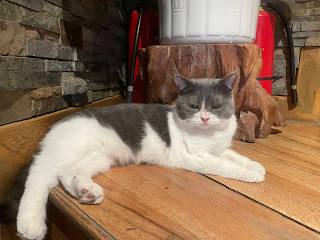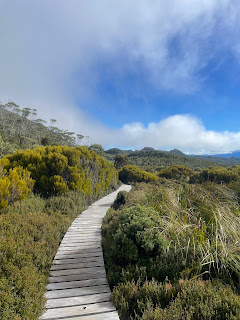Sapa
After my arduous bus journey to Sapa where I spent an hour sitting on a bar stool on the bus cause they were out of seats, I finally made it. I booked myself a cute little bungalow and they arranged a taxi pick up from the bus, which I was grateful for because it was cold (low 50s) and raining and when you get off the bus there are a bunch of taxi drivers yelling at you to take their taxi. Luckily once I showed them I had one booked they helpfully found my driver for me. It’s wild how quickly they go from aggressively demanding you take their taxi to genuinely really helpful and kind. It’s a bit of a whiplash.
I got to bed and enjoyed some good rest, after a long bus ride and late night. The next day it was cold and rainy and all my clothes were being washed so I spent most of the day catching up on sleep. In the evening I braved the cold and fog for a wander around town which was cool, and really pretty. I was chilly, but glad I went out.
The following morning I got up and booked a private hiking tour of the area. A local woman came and got me from my hotel and we walked the rice terraces for 14km to her village enjoying the scenery. It was beautiful, although really muddy and slippery, as it downpoured all night. I slipped so many times that my guide made me hold her hand for a while while we walked which was pretty funny. I finally convinced her I was okay if we walked a bit slower. The walk was incredibly beautiful wandering through the rice terraces. The ones we walked through are all family owned fields. She said that a generations ago every family was give a plot of land which would abundantly feed the family without any additional need, but as family have children the land gets split to each of their families, and now most families have 1/6 of the land to feed their family. Often it isn’t enough to feed the family and they have to buy supplemental food from the market. Because of this, families are now choosing to have smaller families, although that means less people to tend the land as well. It’s quite a complex situation. Additionally, to grow rice well the land needs to remain inundated year round, but hydroelectric damns which now provide local electricity also decreased the amount of water to each of the family farms further complicating things. As with everything it’s quite a complex problem without clear solutions, especially in an area where money is scarce. Luckily, they do make money of tourist dollars.
Something that has surprised me, even though it really shouldn’t have, is how much local tourism there is in vietnam. More than 2/3 of the tourists in any given area seem to be Vietnamese. While this is partially due to the time of year, I wasn’t aware that they travelled so much within their country. My tour guide told me that most travelers are Vietnamese although during western holidays they do get a boost in international tourism. Additionally, Vietnamese people tend to stay in either the north or the south. They are really two separate countries and people don’t really talk about the other area unless pressed and then they say as little as possible. There is clearly little love between the north and south of the country, which I suppose makes sense given the bits of history I know from the country.
The sapa region is known for its indigo dues and hemp textiles. My guide was very adamant in expressing to me that it is only hemp and there isn’t weed (not that I asked), she reassured me many times, giving me the impression that there is a concern that foreigners will think marijuana is common or legal in the region. Peaking in the houses of the locals I could see that many houses were drying hemp and had a wheel for spinning it into yarn, a loom for weaving it into fabric, and tubs of indigo to dye it. Many people were selling textiles to tourists, but most of them appeared mass produced not locally made. I was sad I hadn’t found an atm to buy some of the more genuine looking textiles though because they were quite pretty. Unfortunately I didn’t get photos of them though because I quickly learned that taking photos was invitation for all of the children selling junk to descend on you insisting you buy their items and I did not enjoy the overwhelming pushiness of it.
My guide took me to a restaurant where she gave me enough food to feed a family of 4. I had rice, grilled beef, sautéd chicken, Vietnamese sweet and sour tofu, and fried spring rolls. It was all delicious and there was so much of it all.
After the muddy hike we took the taxi back to town and my hotel booked my a bus back to Hanoi. I paid twice the price for a bus with a full bed on it. It was much nicer than the other buses I have taken, clean, not smelly, almost long enough for me to not lay in the fetal position, relatively comfortable. The main downside was the halfway stop of the 6.5 hour ride they took us to a place you had to pay to use the bathroom. Which I found obnoxious. The price was low, but it was the principal. So I didn’t drink any more water and was patient. Once again upon arrival taxi drivers hounded us at the doors of the bus, but I knew where I was going and how to walk there so I was able to get away quickly.













Funny seeing the coats after all of the warm weather pics! ;-)
ReplyDelete